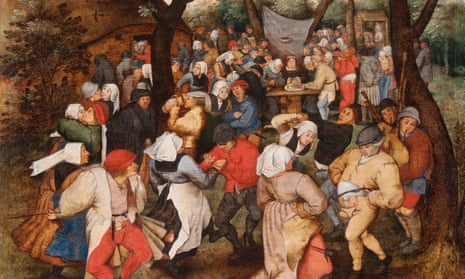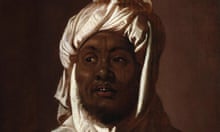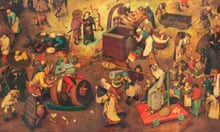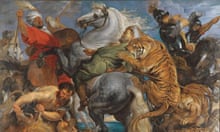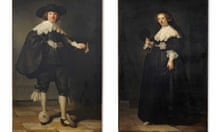Why does the British art world persist in pretending there is more than one great artist called Bruegel, or indeed Brueghel? The Holburne Museum’s new exhibition claims to be “the UK’s first exhibition devoted to the Bruegel dynasty,” but this Flemish family get all too much attention, from high-profile sales to campaigns to “save” their art.
Did you notice that variation in the spelling of the family name? Here is my golden rule: the only Bruegel worth bothering with is the one whose name is spelled without the “h”. Pieter Bruegel the Elder (c1525–69) is one of the most imaginative, original and captivating artists in history. He painted The Hunters in the Snow, that unforgettable image of hunched up peasants, cosy cottages and joyous skaters in a white winter world.
He also painted The Tower of Babel, a surreal vision of a mega-structure like a cross between the Colosseum and a termite mound that dwarfs its builders and the town below. Another of his fantastic visions is The Triumph of Death with its army of skeletons who mercilessly massacre the living.
The genius of Bruegel shows itself not just in his wild imagination – in which he resembles the southern Dutch visionary Hieronymus Bosch – but his acute feeling for landscape and human behaviour. He travelled to Italy and the scenery he saw on his journey (especially crossing the Alps) haunts his paintings, giving them a panoramic, map-like quality. Scenes such as The Hunters in the Snow seem to sum up the very nature of life on earth in their geographical sweep and anthropological scope. Like Shakespeare, he can capture the theatre of life in scenes that are comic yet full of acute psychological portraits. Look at the faces in his picture The Peasant Wedding and the tensions of love and jealousy in The Peasant Dance.
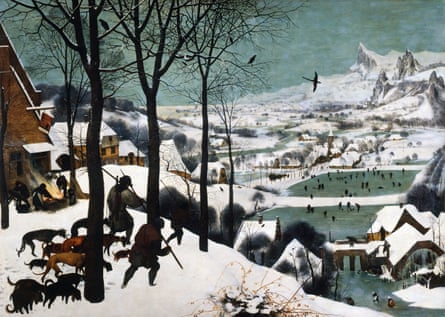
Bruegel is one of western art’s most profound observers of the human condition, the painter who inspired Auden’s line: “About suffering they were never wrong, the old masters.” So who are all these other Bruegels, or Brueghels, the art world wants to distract us with?
Before he died in his 40s, Bruegel had two sons, who also became painters – Pieter Brueghel the Younger (1564/5–1637/8) and Jan Brueghel the Elder (1568–1625). Jan’s son also joined the family business and is known as Jan Brueghel the Younger (1601-78). There were other, lesser descendants, too.
I don’t mind the works of Bruegel’s children and grandchildren. Jan the Elder’s flowers are nice, and Pieter Brueghel the Younger made invaluable copies of his father’s lost works. But why are British museums and art dealers such as Christies, which staged a Brueghel show in 2014, so obsessed with these lesser painters?
Because our private and public collections are full of their so-so product. Indeed, one of the reasons the Holburne is staging its show is that its director spotted that a supposed copy of one of Pieter Brueghel the Younger’s works in its collection is now seen as an original. As the museum enthuses, this peasant dance “can be attributed firmly to the hand of Pieter Brueghel the Younger. Previously thought to be the work of a copyist or follower of Brueghel, it now takes its place as the only version of this popular scene in a UK public museum.”

This boast typifies the way the art world’s experts are happy to confuse the public about Bruegel and his family. Brueghel the Younger is not a great artist: his paintings are pastiches and often copies of his father’s style. So why is it such a big deal to attribute a painting to him? A more accurate version of this blurb might read: “A painting once thought to be a copy of a copyist has now been credited to the original copyist. It is a genuine second-rate simulacrum of the works of Pieter Bruegel the Elder.”
You know who this kind of confusion really helps? Auction houses and art dealers. There are so many works by Bruegel’s sons and grandsons lying around in stately homes that a keen market in their work can draw on a steady supply of so-so carnival scenes.
“Brueghel is one of the hottest artists on the old master market, and Sotheby’s has bagged not just one but three great examples of his work for its old master sales,” enthused the Telegraph in 2014. Like the Holburne, they meant Pieter Brueghel the Younger – but who cares if people confuse his much lesser talent with the genius of his father? That vagueness apparently suits the market as much as museums who can suddenly upgrade their backroom daubs.
Stop this dishonest Brueghel boosting now. It stops us getting a clear view of Pieter Bruegel the Elder, one of the most moving and humane of all artists. This is the kind of obfuscation that puts people off great art – and why should anyone make the effort, if its supposed guardians apparently can’t see the difference between genius and mediocrity?
